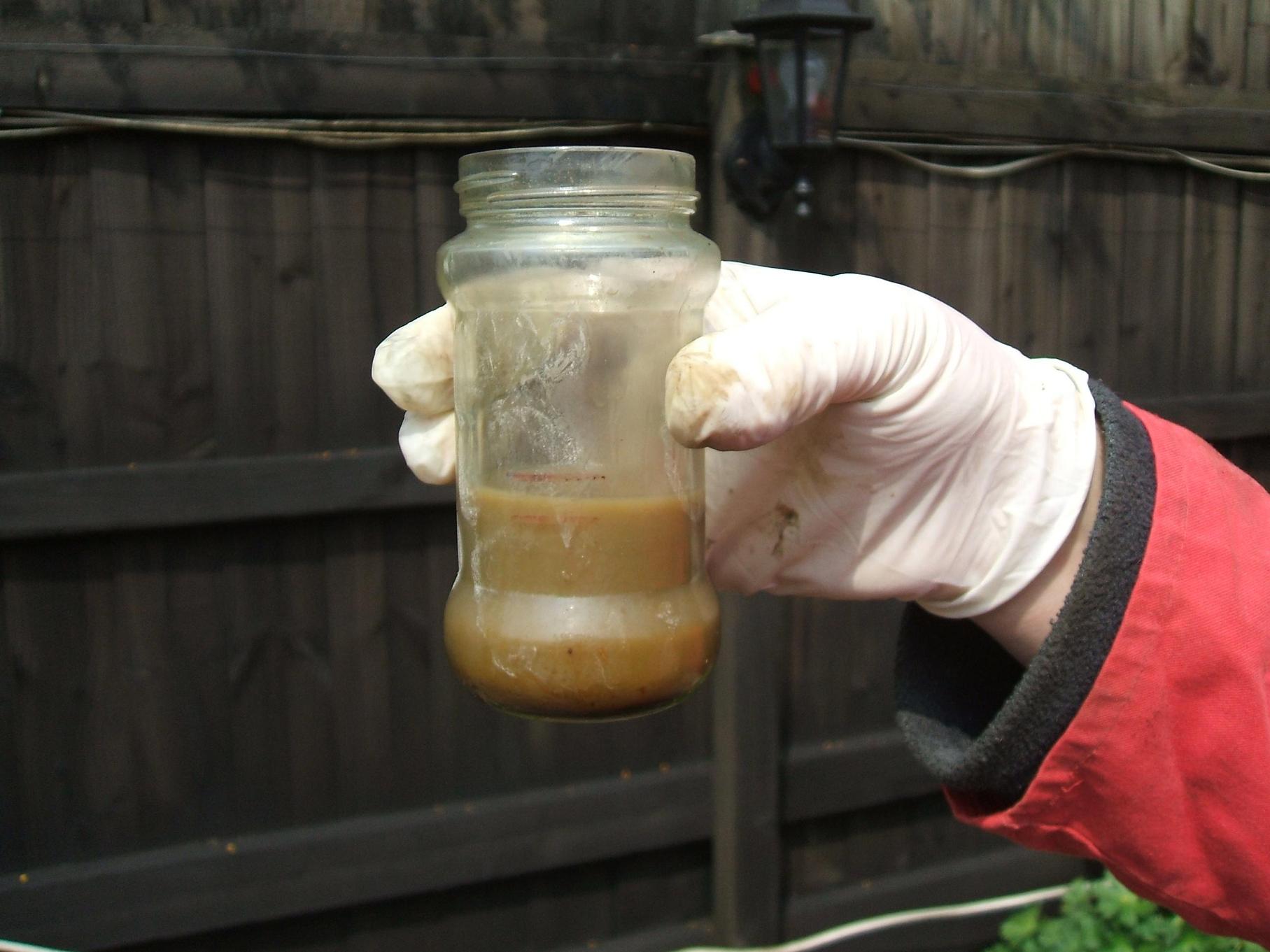OK... I don't think petrol should look like this:
How-ever, I don't think that is related to my problem.
The fuel pump wasn't pumping, so I have replaced it. The new supposedly good pump doesn't pump either. I now have it wired direct to a battery, with the loom disconnected, and can feel it "kick" when power is first applied, but that is it. Thinking this suggested blocked fuel lines, I have disconnected and blown through both the fuel lines and non-return valve on the end of the pump... (hence the contents of the jam-jar), so these are free. When I clamped the hose from the tank to the pump I initially didn't clamp it hard enough and fuel widdled out until I clamped it harder, so I believe fuel is getting to the pump, even if not that much. So... why does the pump only "kick" not pump? I thought that if the in-tank pump had failed it would allow sufficient fuel to pass that the main pump should pump something, even if not the full volume?
Any-one any ideas?
For reference, it was all working before it went into the body-shop for two years!

How-ever, I don't think that is related to my problem.
The fuel pump wasn't pumping, so I have replaced it. The new supposedly good pump doesn't pump either. I now have it wired direct to a battery, with the loom disconnected, and can feel it "kick" when power is first applied, but that is it. Thinking this suggested blocked fuel lines, I have disconnected and blown through both the fuel lines and non-return valve on the end of the pump... (hence the contents of the jam-jar), so these are free. When I clamped the hose from the tank to the pump I initially didn't clamp it hard enough and fuel widdled out until I clamped it harder, so I believe fuel is getting to the pump, even if not that much. So... why does the pump only "kick" not pump? I thought that if the in-tank pump had failed it would allow sufficient fuel to pass that the main pump should pump something, even if not the full volume?
Any-one any ideas?
For reference, it was all working before it went into the body-shop for two years!










